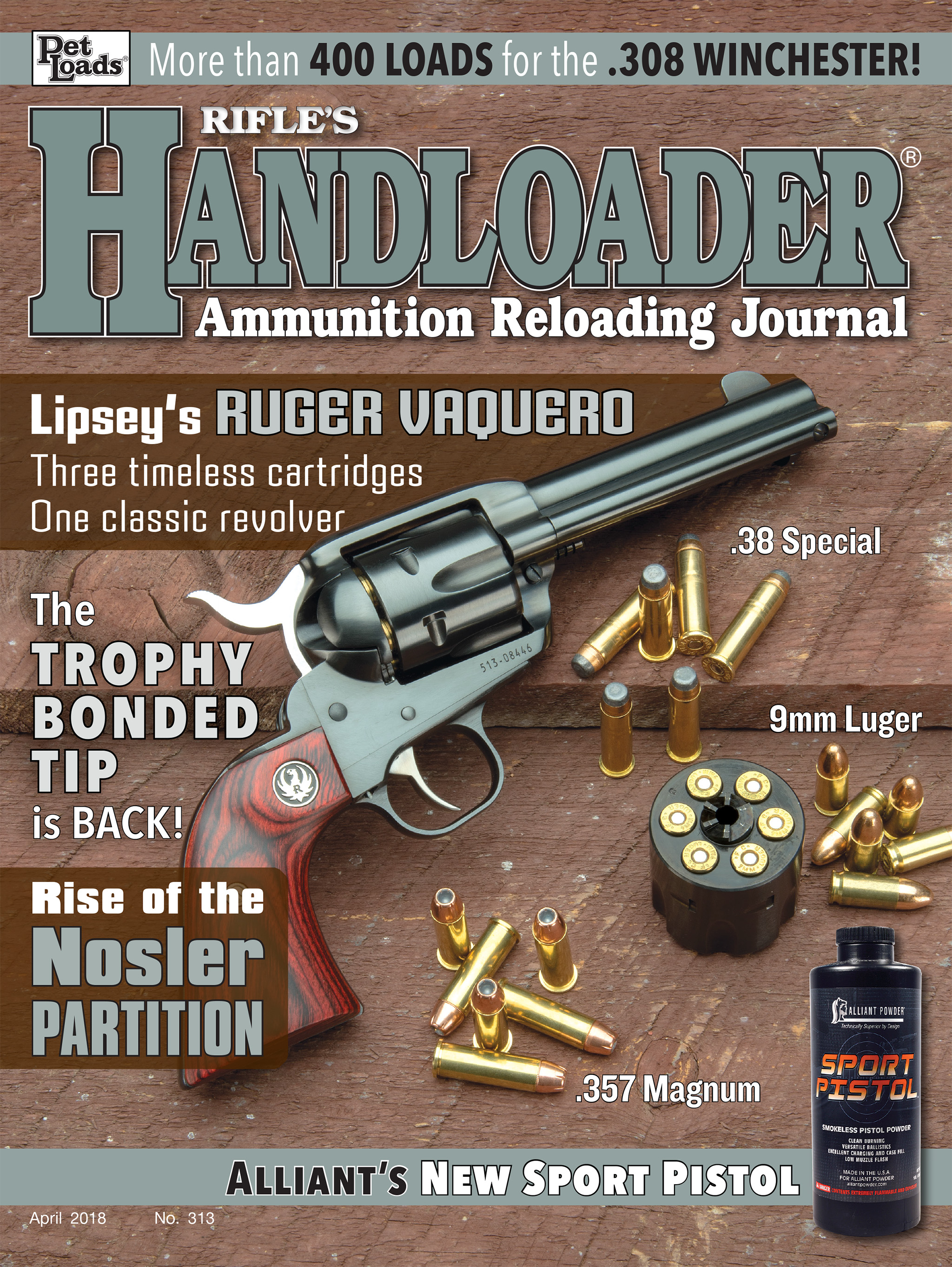Practical Handloading
Fitting Case Necks to a Rifle Chamber
column By: Rick Jamison | April, 18
Handloaders often view a cartridge case only as a container for components, and as a separate entity from a firearm. But the two, cartridge and firearm, must work in concert to produce the best function, accuracy and overall performance. Handloaders of rifle rounds are concerned with a number of cartridge case dimensions, not so much for the specific measurements, but
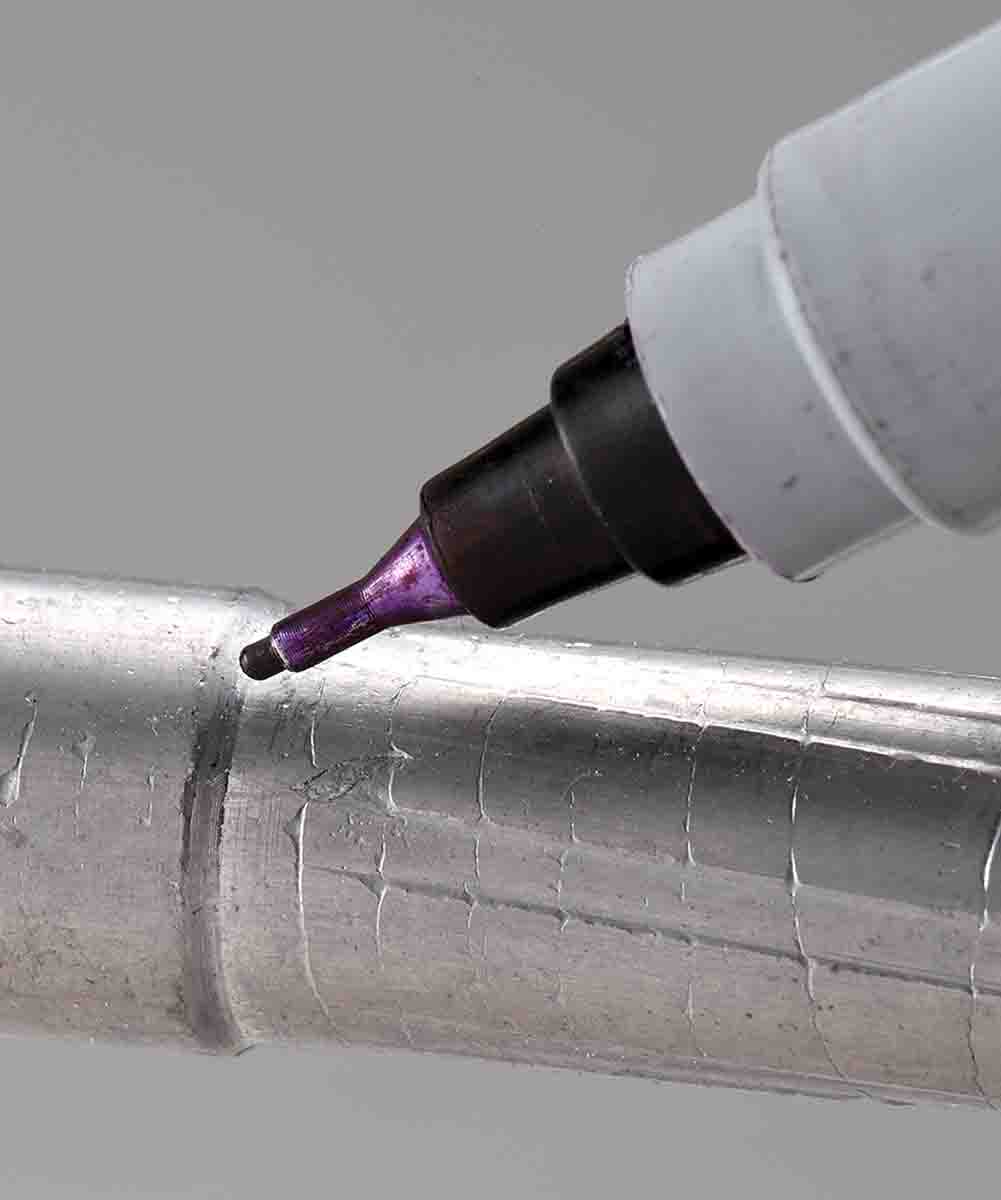
Headspace is one of the first dimensions that comes to mind. Most handloaders know not to set the shoulder back excessively on a bottleneck round in order to maintain a proper situation with the bolt face and case shoulder, whether the cartridge is rimmed, rimless or belted. You also know that cartridge overall loaded length cannot be too long or a round will not function through a magazine.
For this column, however, let’s look specifically at the case neck. Case necks are often not given the attention they deserve. No other section of a cartridge case contributes more to the accuracy, or inaccuracy, of a loaded round than the case neck.
The first aspect of the neck relates to overall case length which is maintained by neck trimming. It is easy to ignore this dimension or delay trimming because it is a mundane operation. There is satisfaction in seating a primer, charging powder or seating a bullet, but trimming a neck does not advance the perception of cartridge loading as does adding a component. Furthermore, trimming has to be followed-up or incorporated with case mouth chamfering and deburring; more humdrum work with no assembly of components.
Usually, the overall lengths in a batch of cases are not the same. Necks do not all lengthen the same amount when fired, and a case that’s too long causes the mouth to be crimped into a bullet when chambered. The beveled case mouth cut in a rifle’s chamber is made-to-order for case mouth crimping, and there is a lot of camming power in a bolt-action rifle. The additional force required to chamber a cartridge with a too-long case is so slight that it usually goes unnoticed.
With no room for bullet release when fired, pressure can go dangerously high. Even just a slightly longer case produces higher
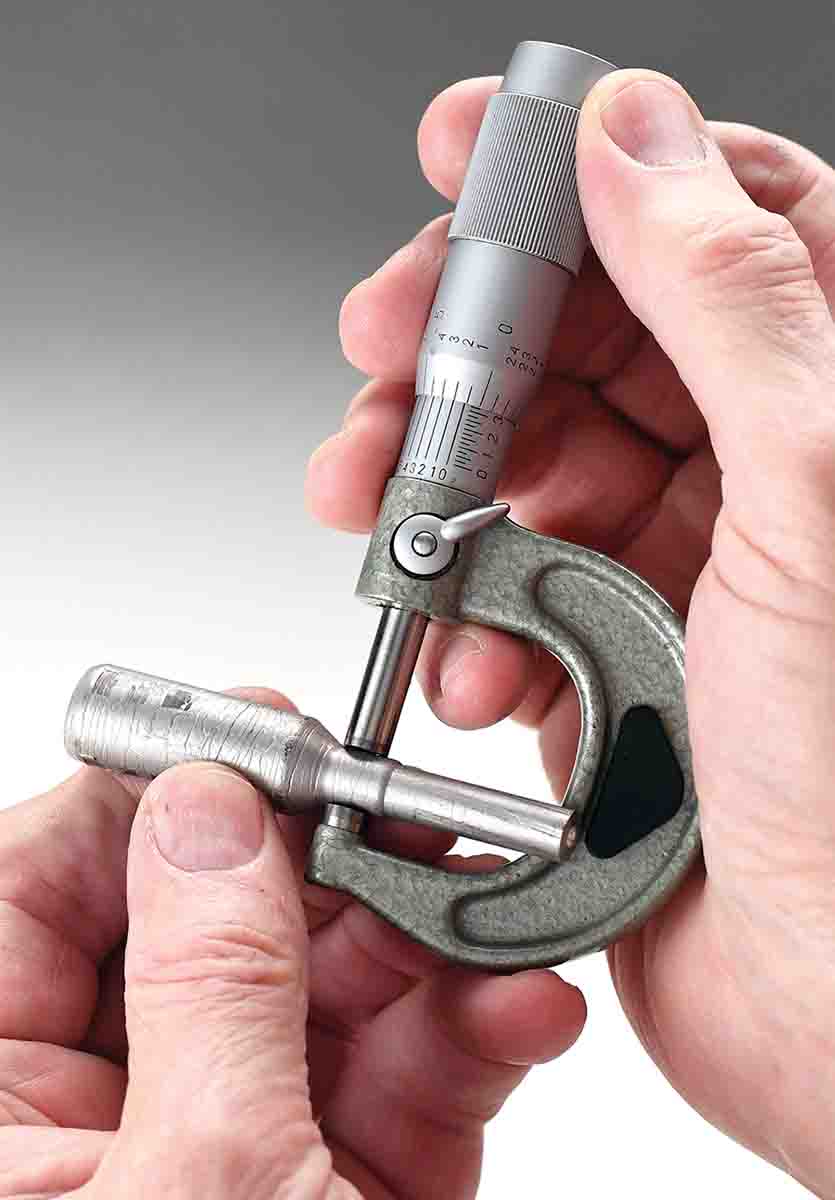
hand, a too-short case results in a gap between the case mouth and chamber throat that a bullet has to cross. Again, this does nothing positive. It is important to keep case length within the recommended specifications as indicated in load data sources. A complete picture of the acceptable cartridge case/chamber relationships can be found at www.saami.org under “Info and Specs” then “Cartridge and Chamber Drawings.”
Fortunately, with power tools, case neck trimming is much faster and easier than it used to be. I use a Little Crow trimmer in an electric drill. However, it must be remembered that this tool references the case shoulder for trim length. When trimming case necks, do it in batches of cases that have been fired in one rifle, and do not mix sized and unsized or new cases.
To get the best accuracy, case neck concentricity and neck wall uniformity are even more critical than length. I have found that the way to get the greatest improvement in handload accuracy is to mate a loaded round’s case neck wall thickness with chamber neck diameter. A uniform neck wall thickness is a plus, but the problem with uniforming neck thickness alone is that to do it, brass must be removed. If you have a standard factory chamber with factory cases, turning or reaming necks creates a sloppier fit (more clearance around the case neck and bullet) in the chamber. The last thing a handloader needs is to leave too much clearance that forces the bullet base to the side on firing, permitting it to get out of square with its longitudinal axis. For this reason, turning necks alone usually does not tighten groups. And if you turn factory case necks too thin, they will not hold a bullet after firing and resizing.
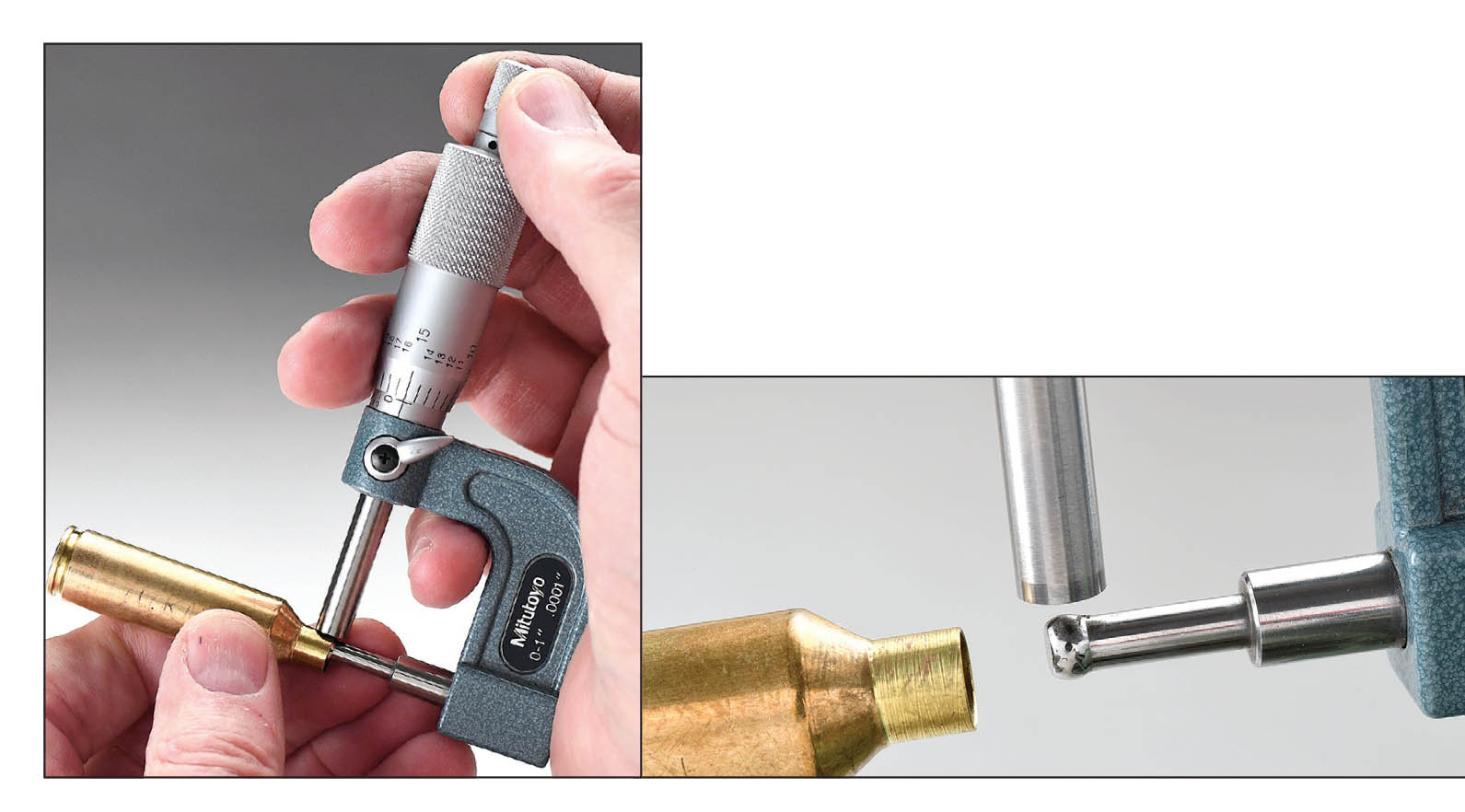
In practice, the chamber neck wall diameter is measured first by making a chamber cast of CERROSAFE from Brownells according to instructions, and then measuring it with a micrometer after the specified cooling period. Then, with a known bullet diameter, you can determine the neck wall thickness necessary. Remember to double the wall thickness for overall diameter, because there are two “sides” to neck wall thickness on a loaded cartridge. Case neck wall thickness can be checked with a .0001-inch ball or tubing micrometer, or you can get within .0005 inch using a caliper.
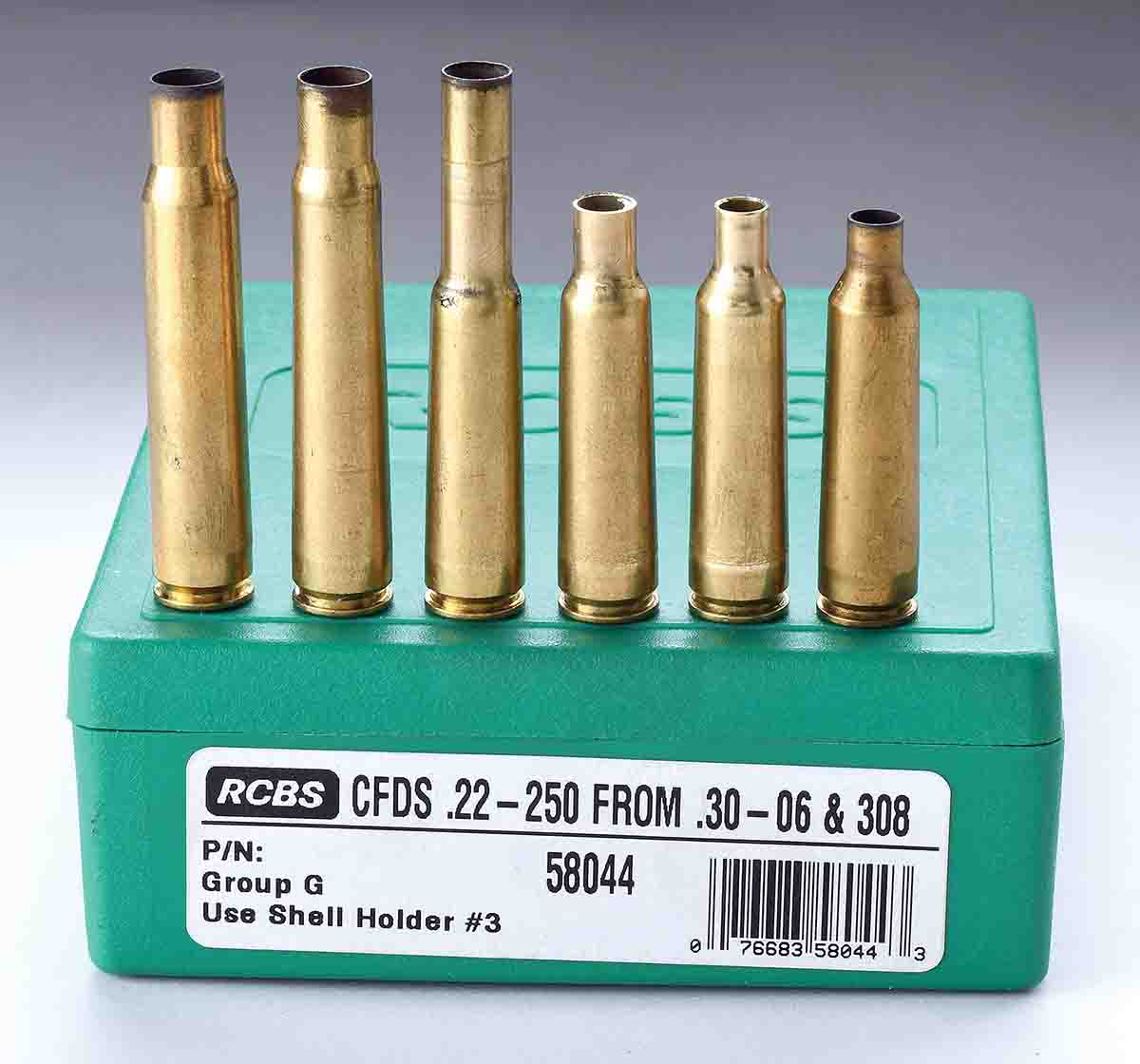
For example, if a .22-250 Remington rifle’s chamber neck measures .255 inch at the smallest, as measured from a CERROSAFE cast, and bullet diameter is .224 inch, subtract .224 from .255 for a result of .031 inch. Subtract .004 inch for bullet release to get .027 inch then divide by 2 (because there are two sides), for .0135 inch. You could turn necks to this wall thickness and have a
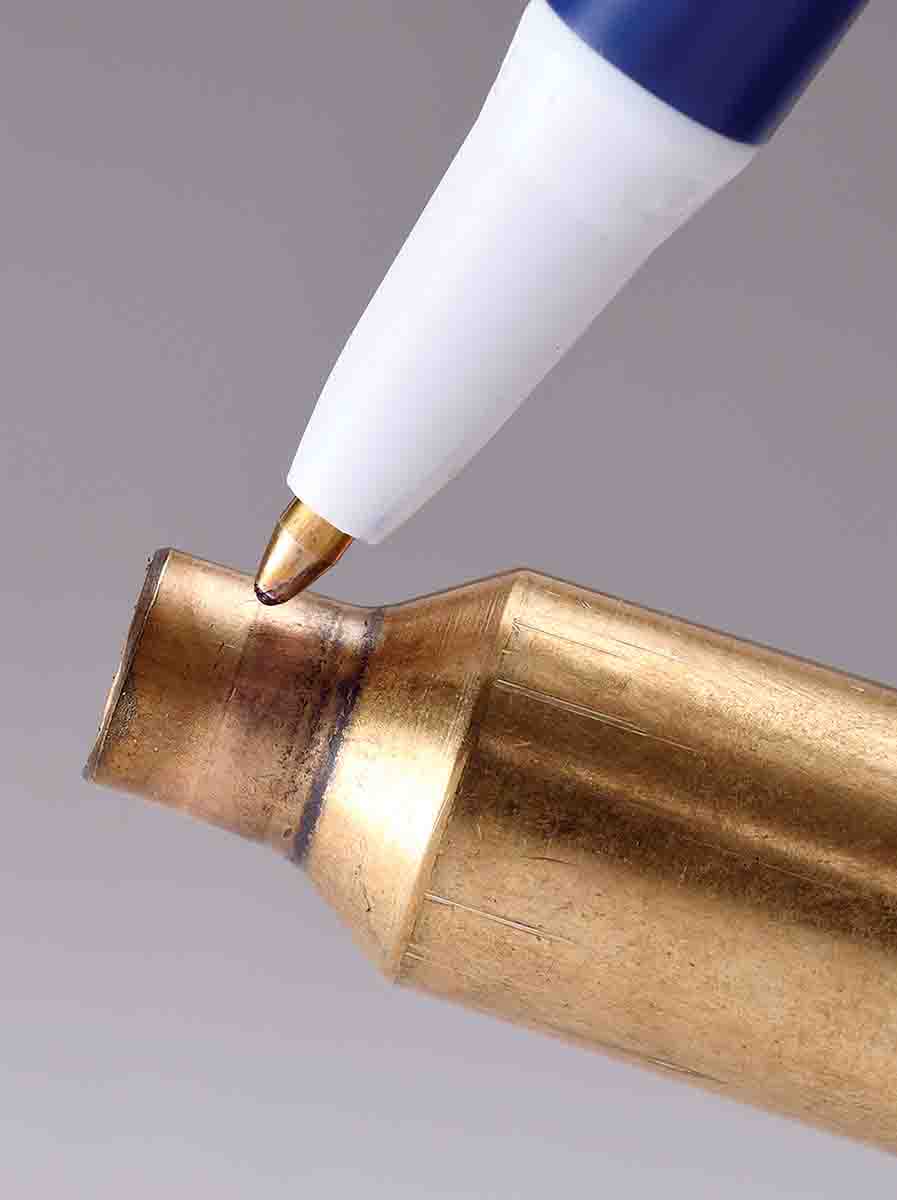
If you do set ammunition up for a tight-neck situation, it is important to check neck wall thickness periodically, just as it is important to check case length periodically. In fitting necks to a chamber by making .22-250 Remington cases from .30-06 brass (to make necks thicker for turning) five-shot group sizes have gone from 1.2 inches to .4 inch at 100 yards in my tests. As mentioned, the accuracy improvement can be dramatic in an accurate rifle with this handloading technique.
If you do not want to go to the trouble of making cases with thicker necks for turning, there is an easier way to improve accuracy. Rather than sizing necks full length, adjust your sizing die so that only half or a little more of the neck is sized. Prepped cases must be fired from the same rifle for which they were loaded. This method leaves the base of the neck at full expanded diameter to center a bullet with the rifle’s bore. It works well if the factory necks are relatively uniform in thickness to start.


